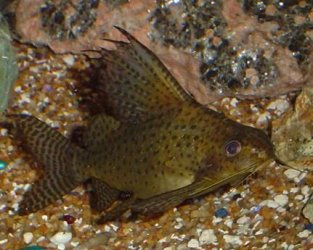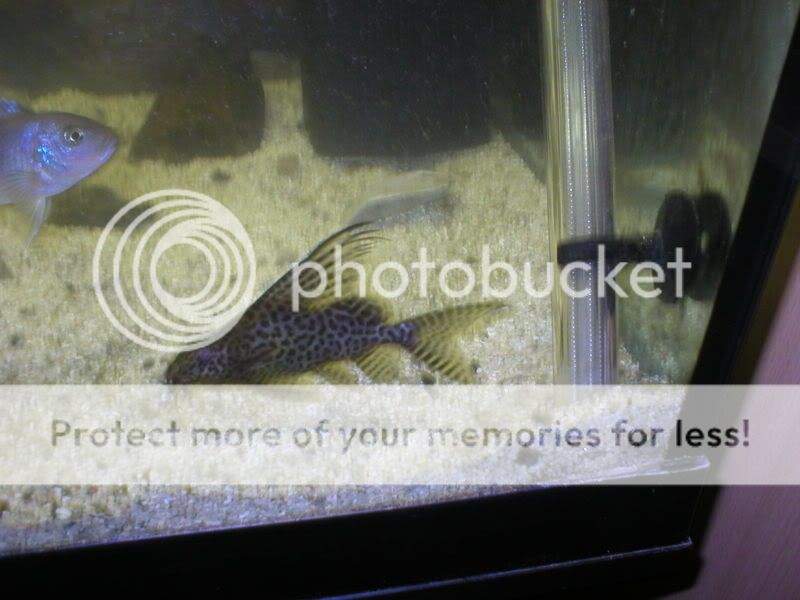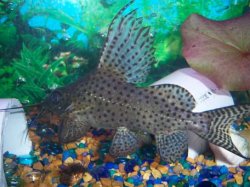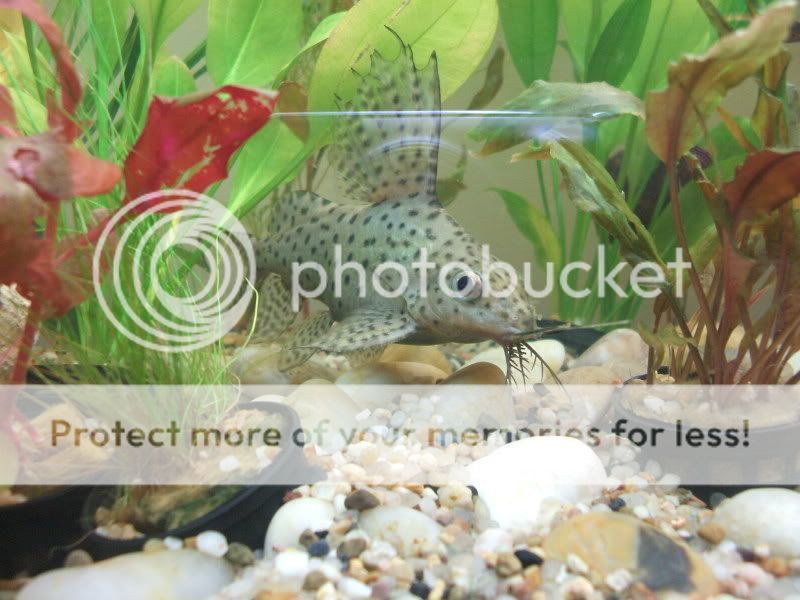Phantom Thief
Population Control Volunteer
Common name/s: Featherfin Catfish, Featherfin Syno
Scientific name: Synodontis eupterus
Family: Mochokidae
Origin: Africa
Maximum size: 8"
Care: The minimum tank size for this fish would be a 30 gallon. Quite a tough fish. Water parameters are irrelevant as long as extremes of pH and hardness are avoided. It is quite peaceful, and most fish are safe with it. It has been reported, however, that they may attack slower moving fish and are slime-suckers, especially towards bichirs. I have not personally had this problem with them, however. You can put several of this species in a tank that is large enough and has sufficient hiding spots. A large piece of wood with many holes or caves are perfect for this purpose.
Feeding: Sinking pellets and bloodworms are taken with relish. May also eat algae tablets, but this should not be used as its staple diet. Nocturnal, but in my experience, will come out at anytime of the day to feed.
Sexing and breeding: Sexing requires taking the fish out of the water and viewing its anal region. Breeding unknown.
Comments: Juveniles and adults have very different colourations. The juvenile has a brown splotchy pattern while adults have black spots. The juvenile of this species has occassionally been confused with the upside down catfish, due to its similar patterning.
Thanks to wuvmybetta for the picture

Scientific name: Synodontis eupterus
Family: Mochokidae
Origin: Africa
Maximum size: 8"
Care: The minimum tank size for this fish would be a 30 gallon. Quite a tough fish. Water parameters are irrelevant as long as extremes of pH and hardness are avoided. It is quite peaceful, and most fish are safe with it. It has been reported, however, that they may attack slower moving fish and are slime-suckers, especially towards bichirs. I have not personally had this problem with them, however. You can put several of this species in a tank that is large enough and has sufficient hiding spots. A large piece of wood with many holes or caves are perfect for this purpose.
Feeding: Sinking pellets and bloodworms are taken with relish. May also eat algae tablets, but this should not be used as its staple diet. Nocturnal, but in my experience, will come out at anytime of the day to feed.
Sexing and breeding: Sexing requires taking the fish out of the water and viewing its anal region. Breeding unknown.
Comments: Juveniles and adults have very different colourations. The juvenile has a brown splotchy pattern while adults have black spots. The juvenile of this species has occassionally been confused with the upside down catfish, due to its similar patterning.
Thanks to wuvmybetta for the picture




